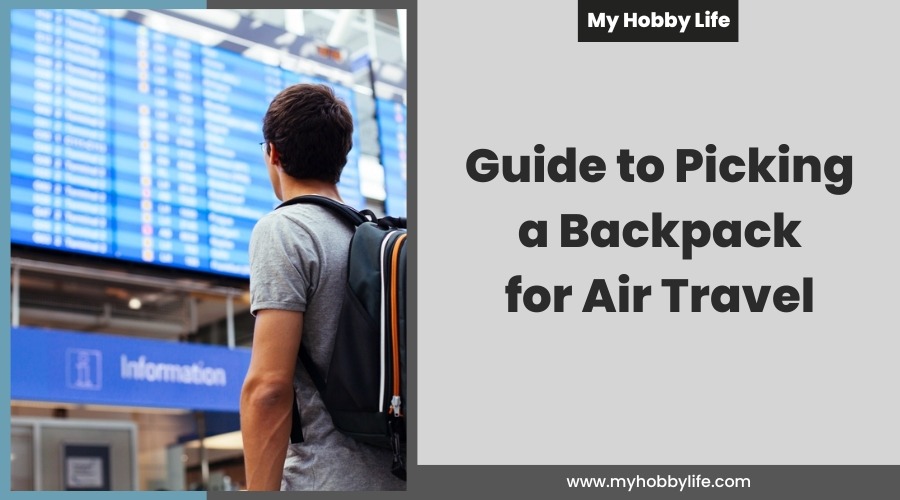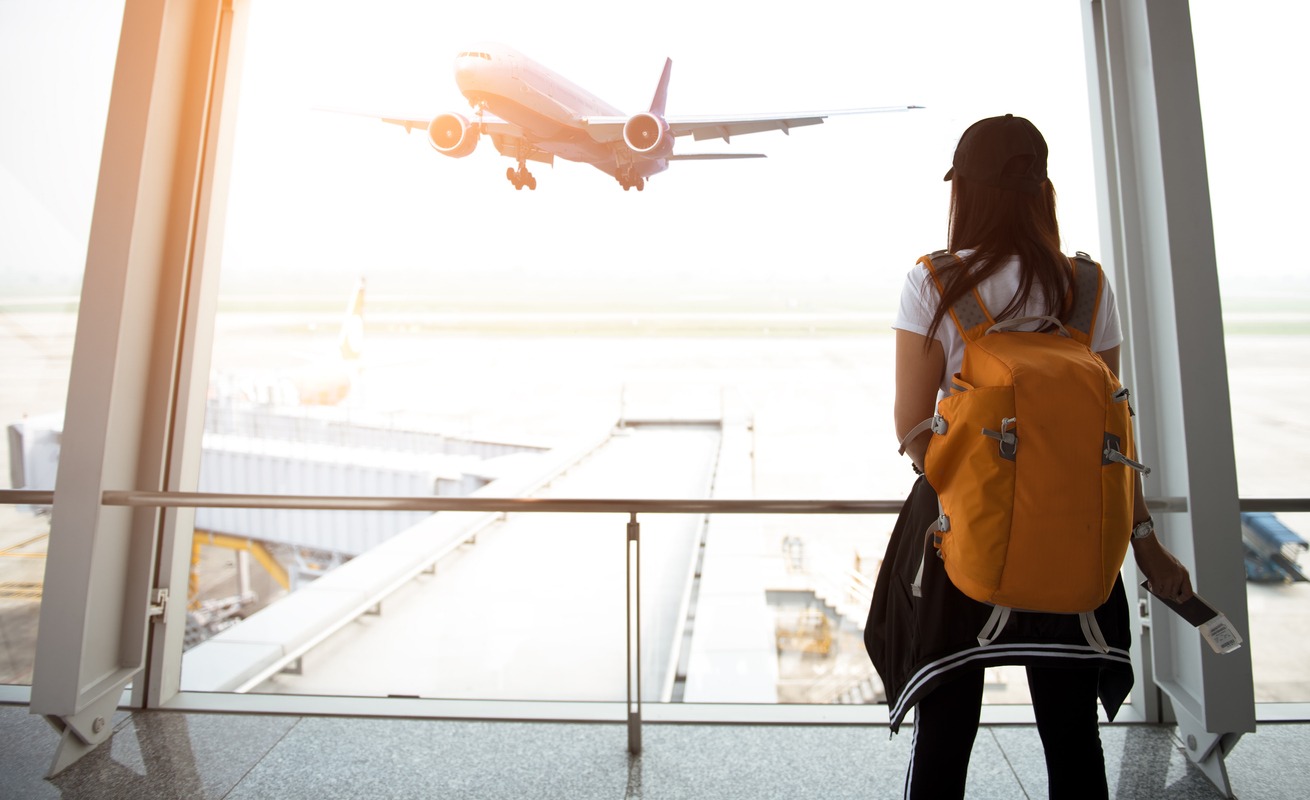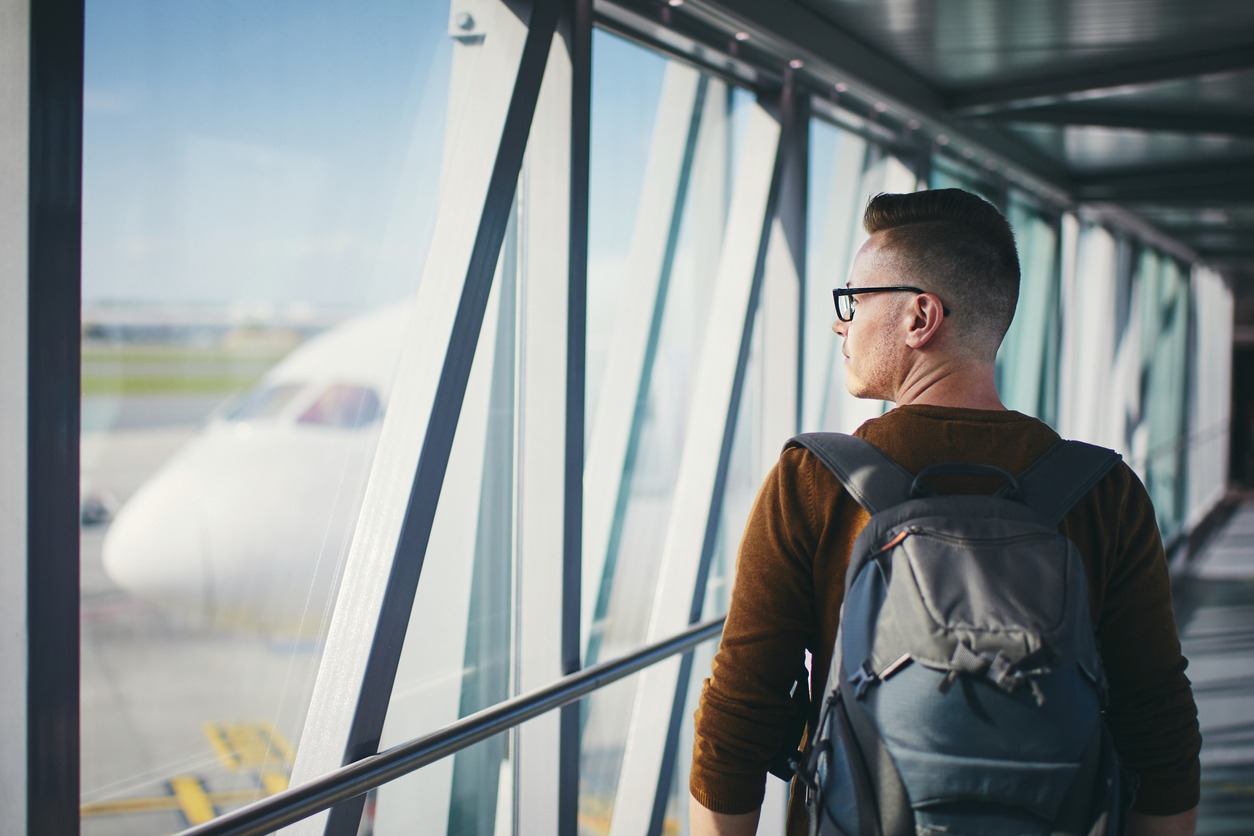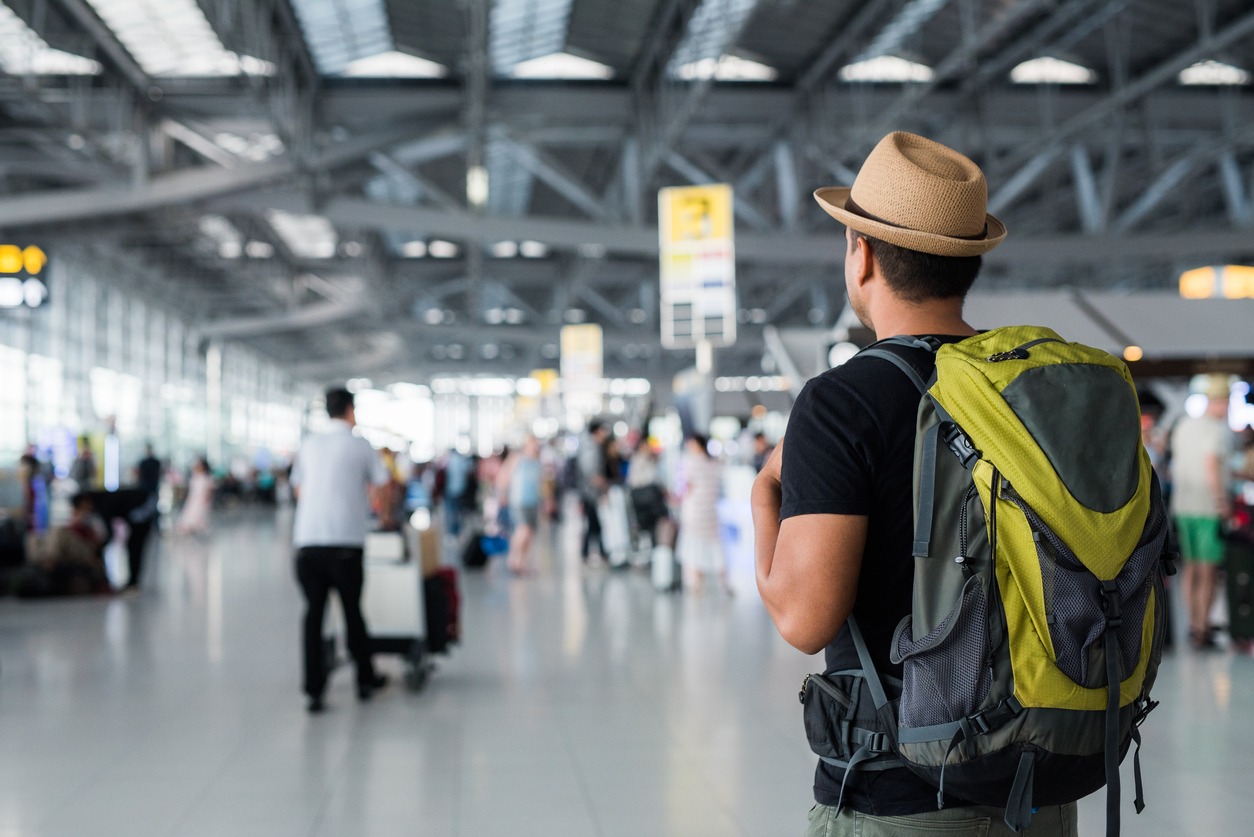A backpack is an all-around piece of luggage used for school, work, gym, hiking, and so many more. Chances are you already have one in your home. Yet, it doesn’t mean you should use the same one for your air travel. Getting a backpack for your outdoor pursuits is on a different note. You need to devote extra time and effort to consider various factors, helping ensure that you get a reliable pack for your adventures.
So, before booking your flight, read ahead as we’ve gathered all the information you need to pick a backpack for air travel. Remember, your backpack is the haven of your belongings and, perhaps, your entire life during your journey – it’s only a must to get a backpack that suits you the best. Let’s get started!
Why Travel with a Backpack?
Before we delve deeper into the vital aspects involved in picking a backpack for air travel, it’s important to know why you should be traveling with a backpack in the first place. Well, imagine rolling a suitcase in the cobbled streets of London, on the dirt roads in Asia, or in the Metro of Paris or Madrid. Quite a hassle, right?
Remember that you will also carry all the weight on one of your arms, also leaving you with only one usable hand most of the time. And just wish that your suitcase’s wheels won’t break in the middle of your trip, putting you in further inconvenience.
Luckily, you can avoid such scenarios by bringing a backpack instead of these wheeled monsters. A backpack can make your travel far easier and more enjoyable. You can bring it with you on the plane as carry-on luggage and fit it in the overhead cabin with ease.
That way, you’ll no longer have to spend about half an hour waiting with other passengers at the airport’s carousel belt. Not only do you save time that you can use on other activities, but you can also ease your worries, knowing that your luggage won’t get damaged or get lost.
Another excellent thing about carrying a backpack is flexibility. You will feel more agile as your arm isn’t restricted to holding and dragging your suitcase. You can jump, skip, or hop over anything in the city, visit the mountains, or travel the backcountry with your backpack comfortably strapped on your back.
Plus, you can even sip your takeaway coffee or milk tea while checking Google Maps, something you won’t be able to do when traveling with a suitcase. See? Traveling with a backpack makes the trip more trouble-free.
Factors to Consider When Picking a Backpack for Air Travel
Now that you’re aware of the benefits of having a backpack, it’s time to go into the various factors to consider when picking one for your air travel. Note that you should never randomly purchase a backpack for the sake of getting one. Take your time to evaluate these aspects, as not doing so can negatively affect your journey.
1. Size
Among the primary considerations is the size of the backpack. While you may want to know what the perfect size is, the truth is – it doesn’t exist. Size varies from one person to another and also depends on a lot of factors on its own.
First, you need to evaluate what type of traveler you are. Are you a casual traveler who only needs to bring a few items? Well, there are backpacks specifically designed for lighter loads. Do you like engaging in more serious activities that require bringing a lot of gear? There are also more heavy-duty packs to suit such pursuits.
Second, you must consider the duration of your stay. If you’re flying to Buenos Aires for a weekend, a 25-30 liter backpack should suffice. If you’re visiting Australia to relax in its beautiful sun-soaked coastline for a week and then stopping through Cambodia to see Angkor Wat and its other prime destinations for another week, then you may need a bigger backpack. That way, you can bring all the things you need for your 2-week excursion.
Just be wary that the bigger your backpack is, the less chance it’ll qualify as carry-on luggage. Typically, you should aim for a 40-45L bag to fly carry-on only. With that, strive to have more discipline with your belongings. Prune out all the unnecessary items and fit all the essentials in a 40-45L bag. You will save time and avoid shelling out money on baggage fees. And you’ll also prevent strain on your back.
Lastly, get a backpack that’s proportional to your body. If it’s too small or too big, the weight of the load won’t be balanced, causing back pain or knocking you over. You also don’t want a backpack that looks tiny on your back, but you also don’t want something too tall and stuffed to the brim, making it seem like you’re carrying a skyscraper.
Your goal is to find a backpack that is big enough to keep all the stuff you’re bringing on the trip and nothing else. If there’s extra space, chances are you’ll just fill it! So, better to avoid such a temptation. If the backpack is proportionate to your body, fits all the essentials, and feels comfortable, then you’ve found the right backpack size for you. Though most manufacturers have suggested sizing based on torso and waist sizes, nothing beats simply trying the backpack on.
2. Straps
Another crucial element in air travel backpacks is the straps. Excellent straps are ones that will ensure good support and a comfortable fit. Regardless if you get the correct size, if the straps aren’t great, if the backpack is uncomfortable, and if it causes pain, you will not enjoy bringing it on your travels.
First, the backpack must have hip straps. One fatal mistake of many travelers is placing the weight of the load onto their shoulders and back. Doing so can damage your body in a lot of ways and put you in peril. As such, you should transfer the majority of the weight (at least 80%) to your hips. Hips straps help facilitate that and allow you to carry your backpack in a more functional way.
To make them even more comfortable and support weight better, the hip straps should have ample padding. While having non-padded hip straps is better than not having any hip straps at all, choosing one with thick padding will be more comfortable and less likely to cause bruises. Note that the hip straps should also be adjustable, allowing you to loosen or tighten them when needed.
Meanwhile, shoulder straps should also be padded as some of the weight will push down on your shoulders. The padding will help decrease the pressure on your shoulders whilst also taking some pressure from your back. Again, ensure that the padding is thick. If it’s made of a single layer of padding, it will most likely thin out and split.
Lastly, your backpack should also have a chest strap. Also called sternum straps, these run across your chest between the shoulder straps. They help stabilize the load, distribute weight evenly, and prevent the shoulder straps from falling. Unlike the other straps, the chest strap doesn’t need to have padding as it doesn’t rest on you.
3. Pockets
Shirts, jeans, gadgets, documents, chapstick, flip flops, passport, wallet, and your laptop – you’d be bringing a lot of items of different sizes on your trip. The last thing you wish to do is stash all these randomly in a single huge pocket, making it harder to organize and locate your items.
Imagine having to look through your stuff to find your passport as you pass through immigration or having to pay at a restaurant, or having difficulties finding your wallet deeply tucked between your shirt – it’s simply impractical.
So, look for a backpack that has enough pockets to accommodate all the things you need. Just enough, not dozens of them. Too many pockets won’t be of use anyway and will most likely add up to the weight and cost of the backpack.
Travel backpacks with 3-5 practical, functional pockets are your best bet. This will enable you to sort your belongings into different smaller compartments. Thus, making it easier to find the stuff you need without having to dig around your bag.
For instance, you can keep your clothes in the bigger compartment, while you can stash your smartphone, passport, or wallet in one of the smaller compartments. Of course, your laptop should fit into the allotted space but ensure that it’s cushioned so it won’t get damaged. On the other hand, your shoes or flip-flops should go into the side compartment to avoid getting your stuff from getting dirty.
4. Material
What material is the backpack made of? That’s a crucial factor to take into account as well. Polyester, leather, canvas, cuben fiber, and nylon are some of the materials that manufacturers use in creating backpacks. Which among them to choose primarily depends on the purpose and goals of your trip.
Will you travel in sandy and dusty locations? Are you visiting hot countries? Do you intend to take short hikes? Well, you need a backpack that is more hard-wearing but is still lightweight so that it won’t slow you down. Polyester and nylon are two suitable backpack materials as they are lightweight and durable. Cuben fiber is also light and sturdy, though it’s more on the expensive side.
Meanwhile, are you planning to go to Southeast Asia instead? Well, expect to experience sudden downpours, especially if you’re traveling during the monsoon season. When that is the case, you must get a backpack made of water-resistant material. It isn’t required for it to be 100% waterproof unless you’re going to hike for several days. If you’re only for a short weekend trip, a backpack made out of semi-waterproof material will suffice so you’d never have to open your backpack to find wet clothes.
5. Frame Type
Backpacks have three frame types: internal, external, and none. Most of the backpacks you’ll see today are internal-frame packs. That means that the frame and the support are built within the backpack and are hidden from sight. These backpacks tend to be more compact and lighter, so these are the ones you should choose when looking for a backpack for air travel.
Avoid external-frame backpacks where the support poles stick. Not only do they look odd, but they are also relatively heavier. Not to mention that the external rods can get caught in anything, making it harder to move around.
Meanwhile, frameless backpacks are a great alternative if you really want to cut down on weight. However, the lack of a frame means less support and can make the backpack pretty uncomfortable under heavier loads.
6. Access
It’s also vital to check how you can access the compartments of the backpack. Some backpacks are top-loading, while others are front-loading. Each of them has its own perks and downside, so take time to assess which one will work best for you.
Top-Loading Backpacks: Top-loading backpacks feature a large opening on the top of the pack from where you can access the items. These are specifically made for backpackers, so they include many features such as straps, ties, and lots of compartments. The catch is that since the backpack loads from the top, it can be challenging to find your things if they get to the bottom, sometimes even requiring you to unload everything from your pack. Plus, top-loading backpacks usually have a pull tie close. That means that you won’t be able to lock your backpack as you would with zippered ones.
Front-loading Backpacks: Front-loading backpacks are those that allow you to zip open the face of the pack from the side to access your items. With that, you’ll get your items more conveniently, especially if the item is at the bottom of the pack. The bad thing about them is that they tend to have few organizational tools. Thus, requiring you to purchase other organizational items like packing cubes that act as portable drawers or shelves.
7. Safety
Theft is one of the sad parts of traveling. You must be vigilant at all times so you won’t end up as a victim and lose any of your valuables to guys with ill intent. Truth to be told, the majority of the cases are due to the convenience of stealing your items.
As such, your backpack should have safety features that will make it hard for opportunistic people to get your stuff or deter them right away. Purchase a backpack with lockable zippers or openings so you can secure your important items. When purchasing locks, don’t buy any random lock you see. Ensure that they’re durable and better if they are TSA-friendly, so officers can check your bag by using their master key without having to break your lock.
8. Other Features
While we have already discussed quite a number of features, there are other cool features you’ll love to get, especially if you know their purpose. So, read ahead so you can have a better understanding of the purpose of all these little things.
Ventilation: A sweaty back is inevitable, particularly if you’re traveling during the summer season, in crowded places, or in tropical countries. While it’s something that you can’t completely prevent, a great workaround to combat sweating is to choose a backpack with ventilation features. Some backpacks have air form channels to allow your back to breathe. Others have a “tension-mesh suspension” that also promotes better airflow and ventilation. Try to check the specifications or with the manufacturers what ventilation features the backpack you’re planning to buy offers.
Drawstrings/Bungee Ties: Such attachment points are handy for temporarily or permanently carrying items that you want outside your backpack. These include your sleeping bag, dirty shoes, wet flip-flops, wet clothes, or any equipment.
Sleeping Bag Compartment: Some backpacks even include a separate built-in space within the backpack to fit a sleeping bag. Usually placed at the bottom, you can stash your sleeping bag in this compartment that already functions as a stuff or compression sack, so you won’t need to bring the one allotted for the sleeping bag. If you don’t need to bring a sleeping bag, you can always use the space for other items that you need to access quickly, such as shoes, clothes, and other essentials.
Compression Straps: As the name suggests, compression straps are meant to squish your backpack, which is extremely helpful as it considerably reduces the size of your pack, keeps items from moving, and brings the weight closer to your back for better weight transfer, balance, and comfort.
Comfortable Grab Handles: Backpacks are designed to be carried on your back. Yet, there are instances when you need to pick them up or carry them like a suitcase. To avoid strain on your hand, look for a backpack with at least two well-padded, comfortable grab handles. Veer away from ones with thinner padding, as the handle will painfully dig into your hand, especially if you have a heavier load.
9. Style
Practicality is often the priority when picking a backpack for air travel. Yet, it doesn’t mean that you should be taking style for granted. After all, you’d most likely want to look the best during your travels. Apart from your outfit, your backpack’s aesthetics plays a huge role in that.
With that, never hesitate to buy a pack that you find pleasing. Some have rounded corners, while others are boxy. Some come in neutral, minimalistic colors. Others come in more trendy, vibrant hues. There are backpacks that look crumpled unless full, while there are also ones that keep their shape and form even without holding many items. The decision boils down to your personal preferences and style.
10. Cost
Let’s face it! Price is always part of the picture when you’re purchasing anything. And when it comes to backpacks for air travel, expect that they can be pretty expensive. Most backpacks can fall between the $99-$300 price range, depending on the brand.
Backpacks on the higher end of the spectrum tend to have more features like special padding and material, which are often more than what you need as a traveler. You can already find good-quality backpacks in the $100–250 price range. They’re already strong and are built to last, enough to withstand the rigors of traveling.
Skip cheap bags as they will easily rip and fall apart, which is a significant inconvenience when traveling. While you initially want to save on cost, you will actually spend more having to buy a replacement backpack. Remember, you get what you pay for, but in this case, you have to ensure that you’ll have a reliable backpack to accompany you on your trip.
Takeaway
That’s it! We’ve covered everything you know to pick a backpack for your air travel. The overall process shouldn’t be as daunting and painful if you follow all the essential notes laid out in this article. Keep in mind that there’s no single ideal backpack for all, but there’s always the one that’s perfect for you and all your adventures. Keep these tips in mind, and you’ll find it soon. Happy travels!



